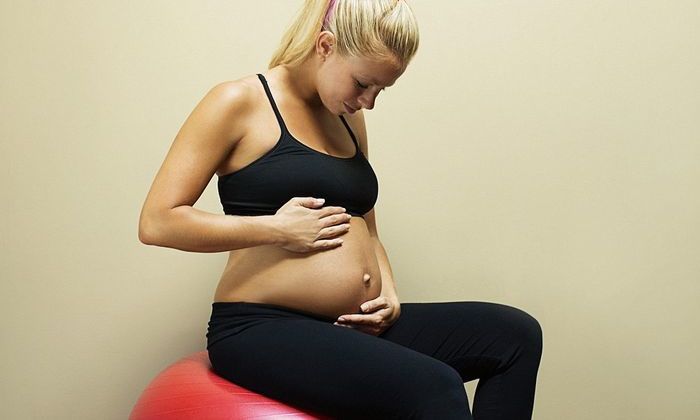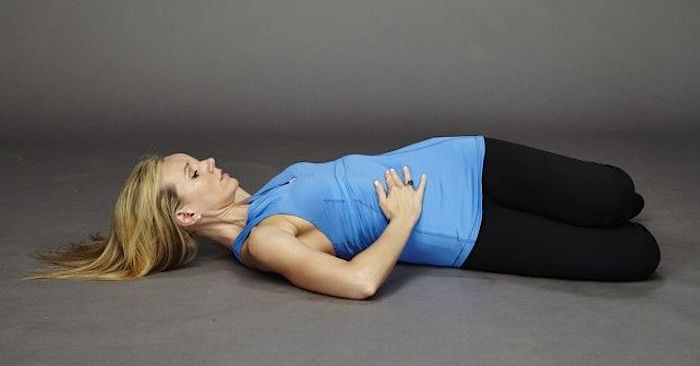
Ab Separation – aka Diastasis Recti – is a common condition that occurs during pregnancy and after. Women’s physiotherapist Tamara Gerdis takes us through the facts
Please welcome physiotherapist Tamara Gerdis, a women’s health specialist from Singapore’s first dedicated women’s health physiotheraphy practice, Physio Down Under, to weigh in on a super-important topic that can make us squeamish, but affects a majority of mamas and post-natal women!
Get to know your Diastasis Recti Abdominis Muscles
During pregnancy, as your baby grows, pressure is placed on your abdominal wall. This increasing pressure, along with hormonal changes, leads to softening of connective tissue, which results in widening of the mid line of your linea alba. The linea alba is the narrow band of connective tissue between your rectus abdominis (or “six pack” ) muscle. A gap bigger than 2cm occurs in over 60% of all pregnancies in the 3rd trimester, and in more than 30% of postpartum women. This gap is called diastasis recti abdominis muscles, or DRAM.
How do I know if my tummy muscles have separated?
Widening and thinning of the connective tissue of your abdominal muscles results in a characteristic doming or bulging of your abdomen when doing any activity that requires abdominal effort.
If you suspect you have a DRAM, you can check by lying down with your knees bent and your feet flat on the floor. Place one hand behind your head and your other hand with your fingers at your belly button. Gently roll your head and neck up as if you are doing a small ‘crunch’. At the same time feel around your bellybutton for a gap between the muscles. This feels like 2 firm edges of the muscle with a soft dip in-between. Try also to feel how deep the dip is. Deeper dips take longer to close than shallower dips.
Read more: What to Expect at Your First Women’s Physio Appointment

I have a 3-finger separation of my abdominal muscles, do I need to be careful with anything?
A gap larger than 2cm should be reviewed by a women’s health physiotherapist. Additionally, there are some activities that can make the separation worse or prevent it from improving, and these should be avoided or modified. These activities include:
- Any heavy lifting
- When getting in and out of bed, make sure you roll on to your side first. Don’t do a ‘sit up’.
- Apply gentle pressure to your tummy to support it when coughing, sneezing or laughing.
- Avoid any activities that over stretch your abdominals such as leaning back over a fit-ball or backbends
- Any activity that causes bulging or doming of your tummy
How can I correct my DRAM?
Most DRAMs respond very well to a specific exercise program that usually starts with activating from the inside out, or more specifically your transversus abdominus muscle. Your exercise program should be corrected and progress as you become stronger and the gap continues to close. Immediately post-delivery, women with a larger than 2cm gap may benefit from an abdominal support, but this is only a temporary measure until your deep abdominal muscles are stronger. Wearing an abdominal support for a long period of time will ultimately weaken your abdominal muscles.
How long will it take for my DRAM to disappear?
This varies from woman to woman but can be anywhere from six weeks to a year. Many factors will influence your recovery such as your commitment to the exercises, avoiding aggravating activities, posture and genetics. Many women will never achieve complete closure of the connective tissue of their abdominal muscles, but anything less than 2cm is considered to be in the normal range.

I am 6 weeks postnatal and would like to start bootcamp. Is this ok?
At 6 weeks postnatal, your ligaments and connective tissue will still be softer and stretchier. This means your joints will be vulnerable to injury. In addition your pelvic floor will still be weaker and certain high impact exercises can have a negative affect on your pelvic floor leading to urinary incontinence or prolapse. Many trainers theses days are able to assess for a DRAM and they would hopefully refer you on to a women’s health physiotherapist if your gap was bigger than 2cm. Even certain core exercises like the plank can be detrimental to your DRAM if you have a large gap or aren’t able to activate your deep abdominal muscles correctly. Ideally all postnatal women should have their abdominal muscles checked before embarking on a new fitness regime
I am 6 months postnatal and have just started some personal training, but my trainer has told me I have separation of my abdominal muscles. Is it too late to work on closing the gap?
It is never too late to start specific exercises to help close a DRAM!
Read more: Five Things to Know About Postpartum Movement
I have been told that I have an abdominal muscle separation, is this dangerous?
A DRAM is not dangerous, however, it can predispose you to back pain, pelvic instability, urinary incontinence and postural problems. Some women with DRAM may develop hernias, which would require a medical assessment.
Do I need surgery to correct my DRAM?
Most women will achieve good results by following an appropriate exercise program for DRAM. Very few women have an actual separation or tear of the linea alba which might ultimately require surgery.






 View All
View All





 View All
View All











 View All
View All







